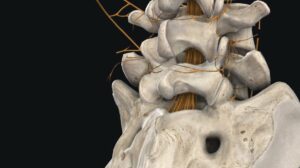NEW YORK (Reuters Health) – The typical cardiac CT angiography (CCTA) exam delivers a radiation dose equivalent to that of 600 chest x-rays, new research shows, although the radiation dose a patient is exposed to with CCTA at one center may be much higher than at another center.
CCTA has become a popular, noninvasive method of evaluating the coronary arteries, but concerns have been raised regarding the risks of exposure to ionizing radiation, the researchers note in the Journal of the American Medical Association for February 4. To date, there has been relatively little information regarding the magnitude of the dose in actual practice.
Dr. Jorg Hausleiter, from Deutsches Herzzentrum Munchen, Germany, and colleagues analyzed data from 1965 CCTA examinations conducted at 50 sites between February and December 2007. The primary outcome was the dose-length product (DLP).
The median DLP was equivalent to an estimated radiation dose of 12 mSv. That is roughly 1.2 times the dose received during one abdominal CT scan or 600 chest x-rays, according to the report.
As noted, however, the DLP varied greatly between sites, “with a range of median estimated effective radiation from 5 mSv to 30 mSv.”
Factors independently associated with the radiation dose were patient weight, absence of stable sinus rhythm, 100-kV tube voltage, ECG controlled tube current modulation, sequential scanning, experience in cardiac CT, number of CCTAs per month, and type of 64-slice CT system.
“Effective strategies to reduce radiation dose are available but some strategies are not frequently used,” the authors note. Furthermore, there was no evidence that algorithms for dose reduction adversely affected image quality, the report indicates.
“The international system of radiological protection stands on 3 principles: justification, optimization, and diagnostic reference levels,” comments Dr. Andrew J. Einstein, Columbia University Medical Center, New York, in a related editorial. The current study “provides valuable information pertaining to each of these in the context of cardiac CTA, and as such makes an important addition to the evidence base.”
Reference:
JAMA 2009;301:500-507,545-547.




